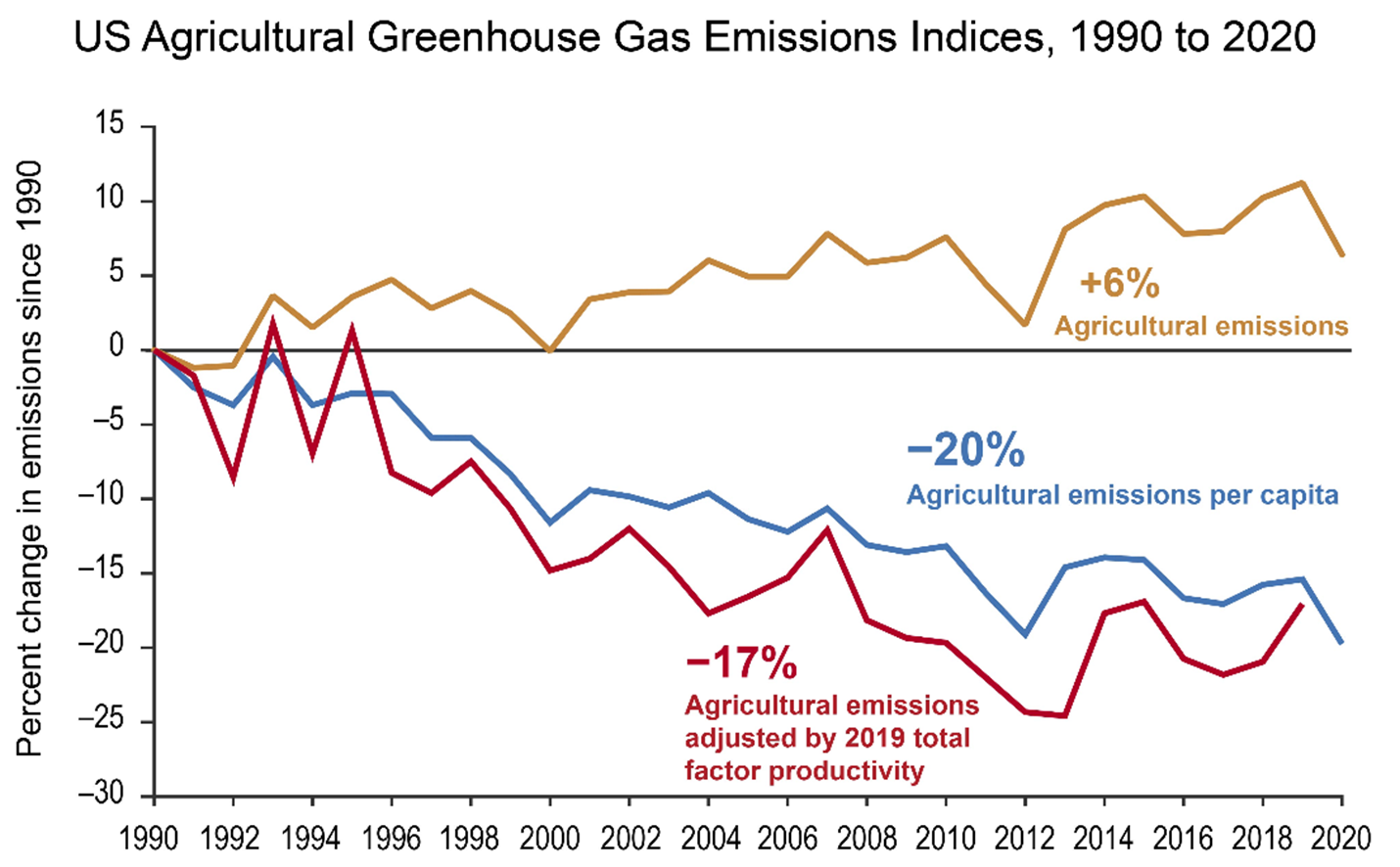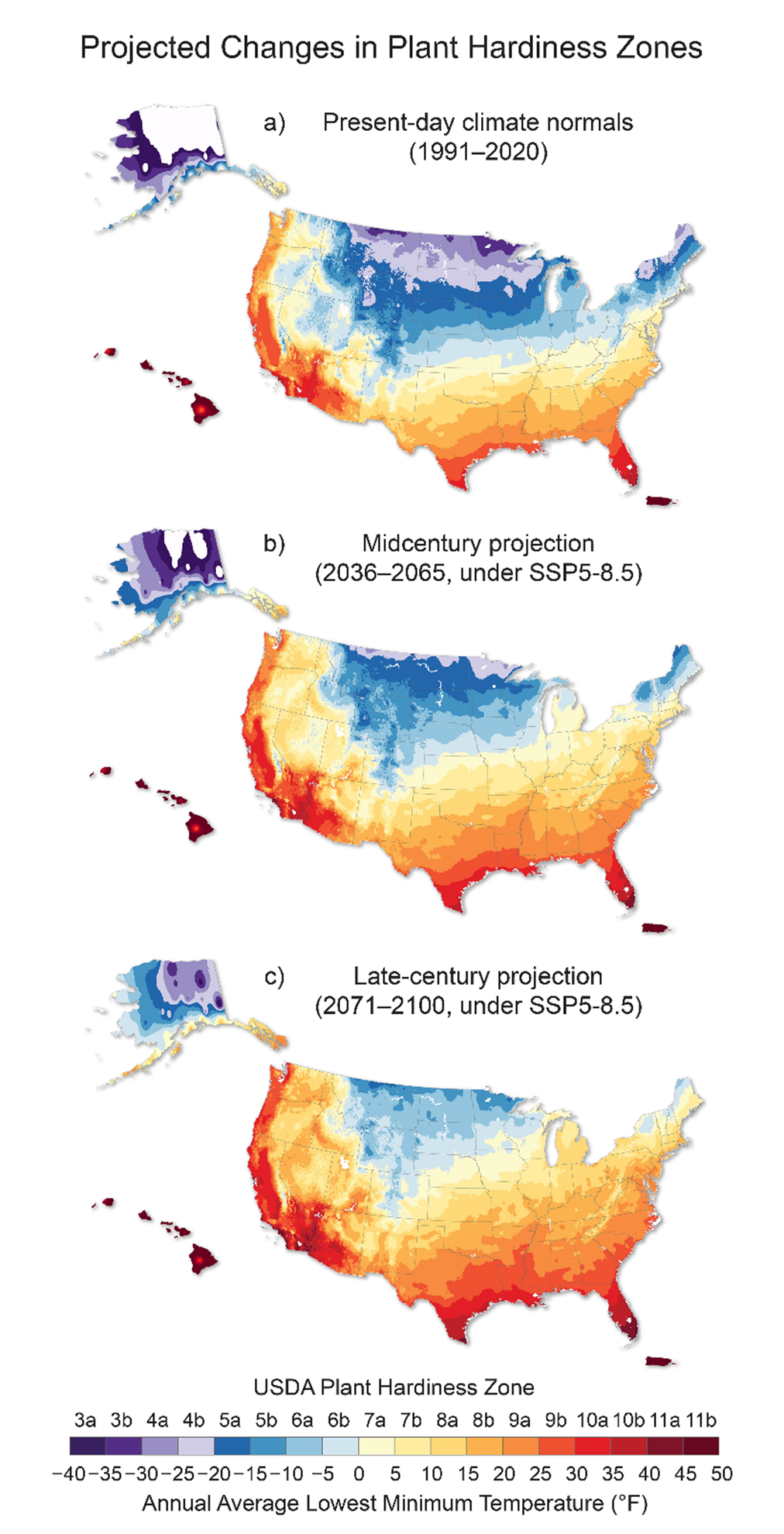US Agriculture and Greenhouse Gas Emissions
- Overall agricultural greenhouse gas (GHG) emissions in the US have increased over the last three decades.
- Increased productivity of US agriculture, however, has led to lower GHG emissions per capita and per unit of total factor productivity (TFP, a ratio of agricultural outputs produced to inputs used).

Climate Change and Productivity of US Agriculture
- Agricultural TFP (defined above) in the US has grown at a rate of 1.4% per year since 1948.
- Climate change has dampened TFP growth in the US by 12% between 1961 and 2015.
- Agricultural TFP is projected to return to pre-1980s levels by 2050 unless the positive effects of innovation and adaptation in US agriculture can be doubled relative to recent historical rates.
Shifting Plant Hardiness Zones
- Climate shifts in Plant Hardiness Zones along with greater expected weather volatility require changes in crop selection, use of equipment, and management approaches.
- Plant Hardiness Zones are projected to migrate northward as the climate warms.

Climate Change, Risk, and Commodity Prices
- Between 1991 and 2017, increasing temperature with climate change was responsible for 19% of crop indemnities in the US.
- By 2050, climate change is projected, on average, to promote increases in the price of some crops (26% in corn, 30% in soybean, 26% in wheat, 3.1% in rice) due to a projected reduction in production relative to a baseline of no climate change.
Reducing GHG Emissions and Adapting to Climate Change
- Significant mitigation can occur through:
- reductions in nitrous oxide emissions using precision technologies that target the right amount, source, placement, and timing of nitrogen fertilizer applications.
- formulation of methane-reducing diets in ruminant livestock systems.
- conservation management with no-till, cover cropping, and perennial crop rotations to store more soil carbon.
- Many of these same agroecological approaches will support adaptation to climate change by improving soil health, increasing biological diversity, and making more efficient use of fertilizers, feed, water, and energy.
- Matching unique regional combinations of plant and animal genetics with regionally relevant management practices can optimize soil carbon sequestration, reduce GHG emissions, and enhance adaptability to a changing climate.
- Agroecological approaches supported by conservation programs (such as those offered by the USDA through the Natural Resources Conservation Services, Farm Service Agency, and Risk Management Agency) can create rural opportunities while optimizing production goals with ecosystem services to store soil carbon, reduce GHG emissions, protect biodiversity, maintain water, and air quality, and improve soil and human health by reducing exposure to pollutants.

